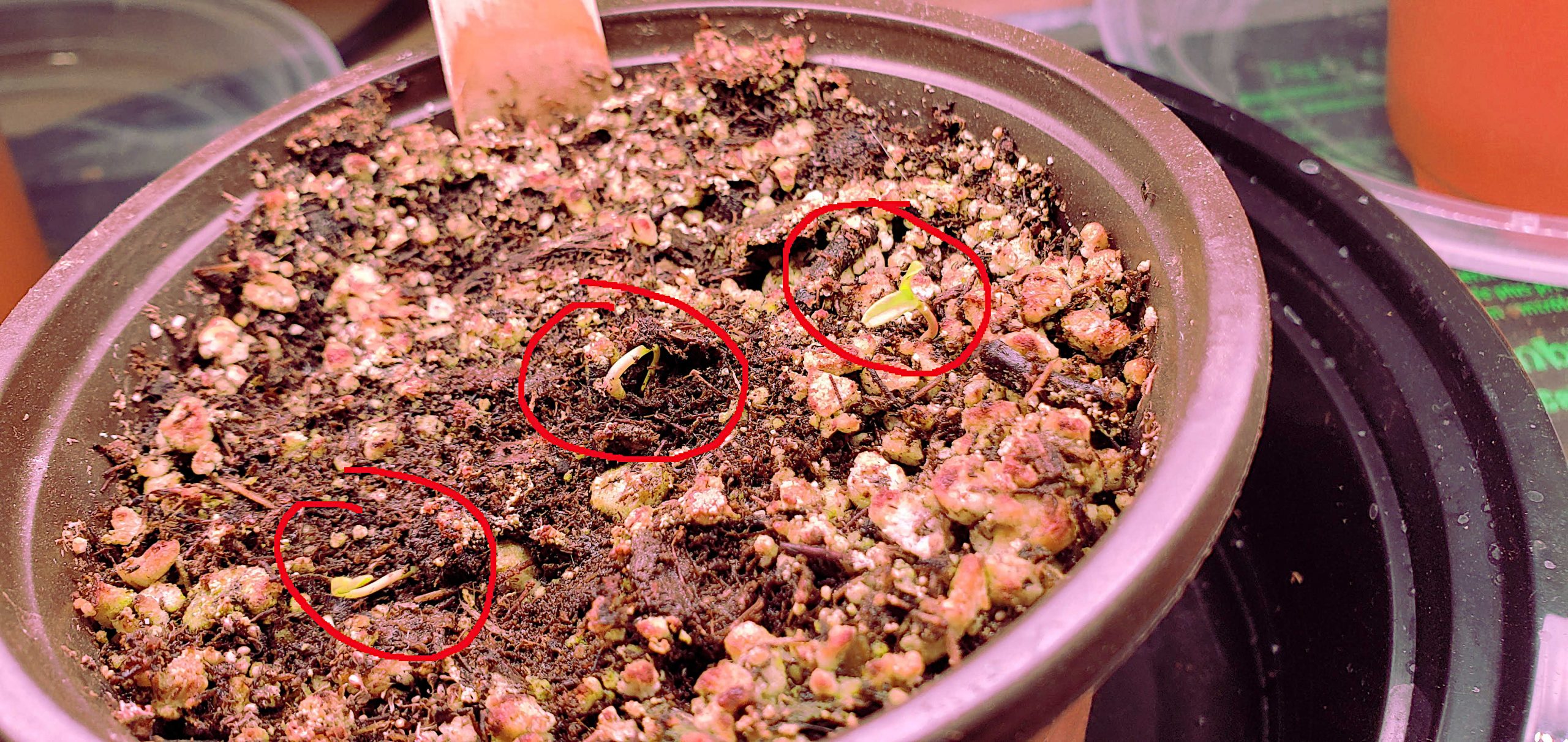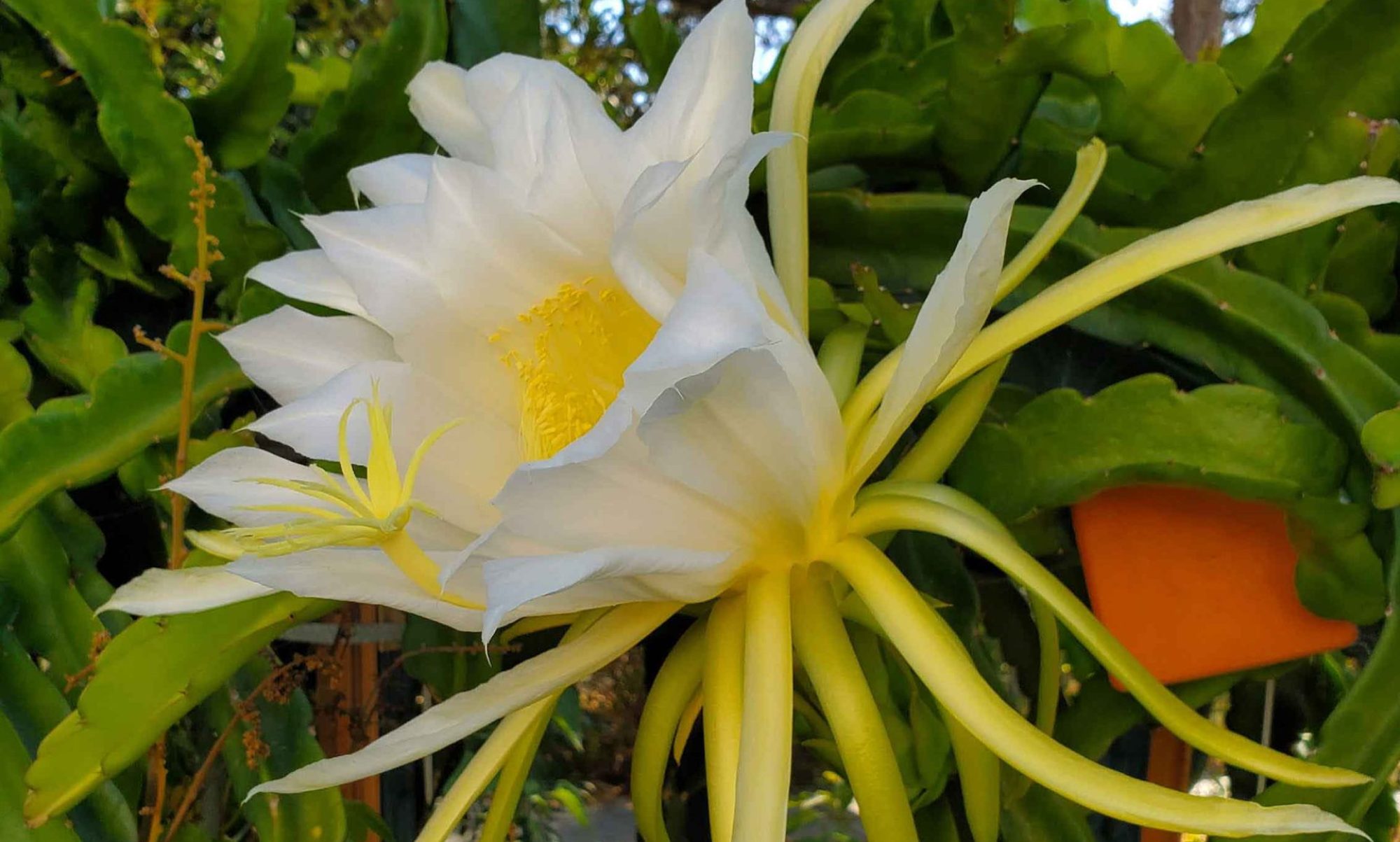About Us › Forums › Growing fruit (questions,boasting, etc) › Capers
Tagged: Capers, germination
- This topic has 7 replies, 2 voices, and was last updated 3 years, 3 months ago by
Admin.
-
AuthorPosts
-
-
October 18, 2020 at 6:57 pm #4802
Caramatti
ParticipantI intend to post a few things as follow-up to the recent Zoom meeting. But if I don’t get everything done that I’d like to, I want to at least post this link that I found today. It has some very good information on growing capers, and on using different parts of the caper plant as food. The lady who started the thread is living in the Himalayan mountains at 10,500 feet elevation, and the conditions there are very dry and harsh. But once they get established, capers do well there!
Link: Caper: plant for a super arid climateAlan
p.s. — If you have a question for me about capers (one that other people who are also interested in capers might like to know) please reply to this post. I’ll keep an eye on this forum for the next couple of months and respond here. -
October 18, 2020 at 8:55 pm #4803
Admin
KeymasterWhat a great link, Alan! Thank you for posting it. I have no idea if your SoCal capers really need time in the deep freeze to “hatch” or whether it would terrify them to bits. I will try a couple of different other ways of germinating them and keep my fingers crossed.
-
October 20, 2020 at 4:04 am #4812
Caramatti
ParticipantI mentioned in my presentation that in Pantelleria (which is reputed to have some of the world’s best capers), they cure capers with sea salt only (using a specific sea salt from Sicily). In Pantelleria they don’t add water or vinegar (which some other curing methods call for). Here’s the salt-only curing method that I’m trying out right now. You need a kitchen scale to weigh the ingredients with. (Sorry, but I didn’t think to take note of the equivalents in volume; maybe next time.)
- Weigh the caper buds/berries, and place them in a glass bowl that you can leave them in for 3 weeks.
- Calculate 40 percent of the capers’ weight. This is the amount of sea salt you want to add to the capers now.
- Add the salt to the capers in the bowl, and stir them.
- Cover the bowl loosely with plastic wrap (loosely!) or with a paper towel, and set aside in a place where they’ll be out of the way, but you’ll see them every day. These things are going to make a stink for several days, so keep that in mind!
- Once every day or two stir the capers to re-distribute the salt. The first few days you’ll notice liquid gathering. The salt is drawing that liquid out of the capers. And yes, they’ll stink (That’s good! They’re getting rid of stuff you *don’t* want to eat!)
- After 10 days, whatever liquid you noticed in the bowl will be gone or almost gone.
- However much sea salt you added before, now you’re going to add half as much (20 percent of the weight of the capers). Don’t remove anything from the bowl; just add another 20 percent salt, and stir.
- Keep stirring every 1 to 2 days for another 10 days, until you’ve stirred the sea salt/caper mixture for a total of 20 days.
- That’s it! Your capers are ready to use and to store in a jar with a tight-fitting lid.
You can store these capers for I-don’t-know-how-long. At least a year by what I’ve read. They’re salt-cured (which is pretty similar to being dried), but they’ve also gone through lacto-fermentation, which is another food preservation method. Unless you don’t like capers at all, you’ll eat them or give them away as gifts before there’s any threat of spoilage.
You’ll need to soak these capers before using them (unlike the ones you buy in the store). But if you soak/rinse them long enough (maybe even overnight!) or if you add them to a dish *instead* of the salt that the dish calls for, you’ll notice distinctly earthy, floral flavors that aren’t like any other ingredient I’ve come across. Capers that are cured in salt *only* don’t have a vinegar-y bite that distracts from the flavor of the capers themselves. I’ve preserved them in a salty vinegar solution before, but I prefer this way because they taste better (to me). The only drawback is the time it takes to soak the extra salt back out of them.
I’m still experimenting with this. I put 3 salt-cured caper berries in water to soak, and I ate one after 45 minutes (way too salty!), then about 3 hours (still salty!), and the last one the next day (not salty). Do your own experients, and see what you think! Then let us know here in the WLA CRFG forum!
-
October 23, 2020 at 1:05 am #4818
Caramatti
ParticipantToday I got better at using my salt-cured capers. I cut one caper berry into slices 1/8-inch thick and plopped them in a little container of water, swishing it around a little. Then while they sat in the water I make my salad. By the time the rest of the salad was ready (about 5 minutes), the caper’s saltiness had been tamed down enough to add to the salad. They were still saltier than I’d eat if I was going to pop one in my mouth. But that’s not what I’m doing — I’m adding them as a flavor boost to my salad, and it worked!
-
November 14, 2020 at 10:29 pm #4877
Admin
KeymasterThis is the blog I found on germinating caper seeds, whether fresh or dried, in our climate. https://fromseedtotable.blogspot.com/2009/07/growing-capers-from-seed.html
I haven’t quite gotten around to trying it yet, but hope springs eternal…
-
November 22, 2020 at 1:27 am #4899
Admin
KeymasterAlan, this is actually from Wendy Temple who emailed it to me: Question for Alan about caper growing. I was just wondering if the plant was a slow growing one. The one I got at last year’s silent auction is not dead, but seems to be the slowest growing plant ever!”
-
November 22, 2020 at 2:45 am #4900
Caramatti
ParticipantYes, they are slow growers. But their native habitat is pretty harsh: windy, hot and low rainfall. So being a slow grower in that environment isn’t really surprising.
The trunk gets thicker very slowly. In that respect, you might think of it as being a little more like a cactus than a tree. A 1-year-old plant has a trunk that’s about 1/8 inch in diameter. A 3-year-old plant’s trunk is still only about 3/8 inch in diameter. I would guess that, being adapted to harsh, low-water climates, capers probably spend more of their early growth on their root systems, to ensure their longterm survival.
As the trunk gradually increases in diameter over the years, the plant will also grow more “whips” from the trunk. And over the years these whips will get (very slowly, from year to year) longer. My oldest caper plant is about 25 years old now, and it grows out to about 8 feet in diameter each year.
Capers are deciduous, so expect them to lose their leaves every winter. And don’t be surprised if some of last year’s “whips” (branches) die. Just cut the dead ones back to the trunk before the new growth gets too far along in the spring. New whips will sprout as needed.
I hope this helps you understand your plant a little better. From a gardener’s point of view, it’s a patience game. Long-lived perennials may grow more slowly. Like the tortoise and the hare, their clocks seem to go slower, but they last a long time. They’re tough. You might think of them as being “built to struggle along, slowly but surely”.
So be sure to not over-water it. Once a caper plant is established in the ground, if it gets 10 inches of rain a year, it’ll be just fine. If you have fast-draining soil, it will grow more if you give it more than that. But I wouldn’t let it sit in water — especially in cold weather. And if you choose to fertilize it at all, I would caution you against over-doing it. The plant may even look better at first: more lush growth, and gorgeous leaves that are soft as kid skin gloves. But that’s exactly what the pests like, too: lush, juicy greens to eat like salad.
-
-
December 26, 2020 at 9:04 pm #4971
Admin
KeymasterAlan, at long last sprouts (I think)! This is one of the two pots where I planted seeds from your caper berry distributed so kindly by Jane many moons ago. Do these look like caper sprouts to you?

-
-
AuthorPosts
- You must be logged in to reply to this topic.
